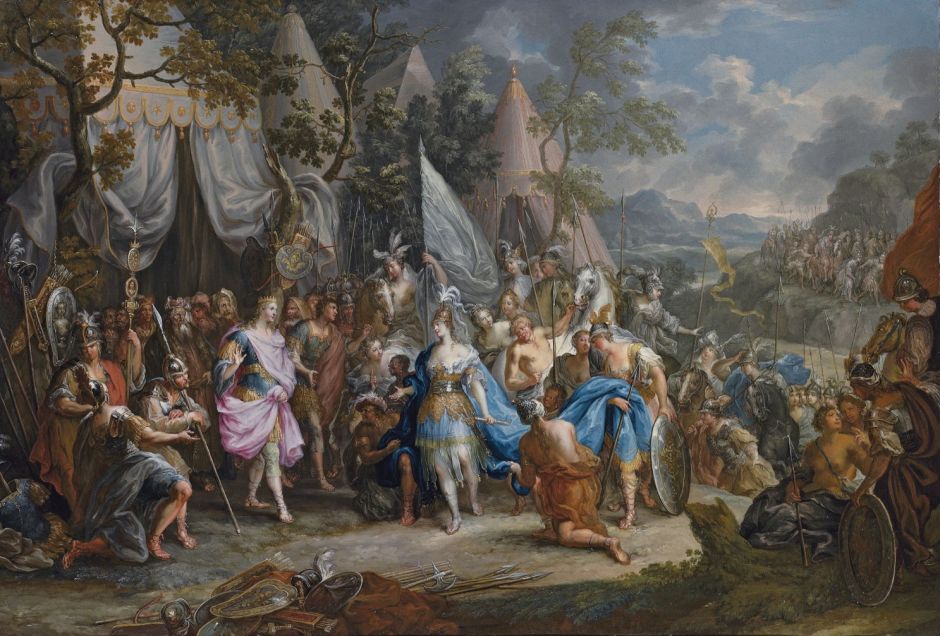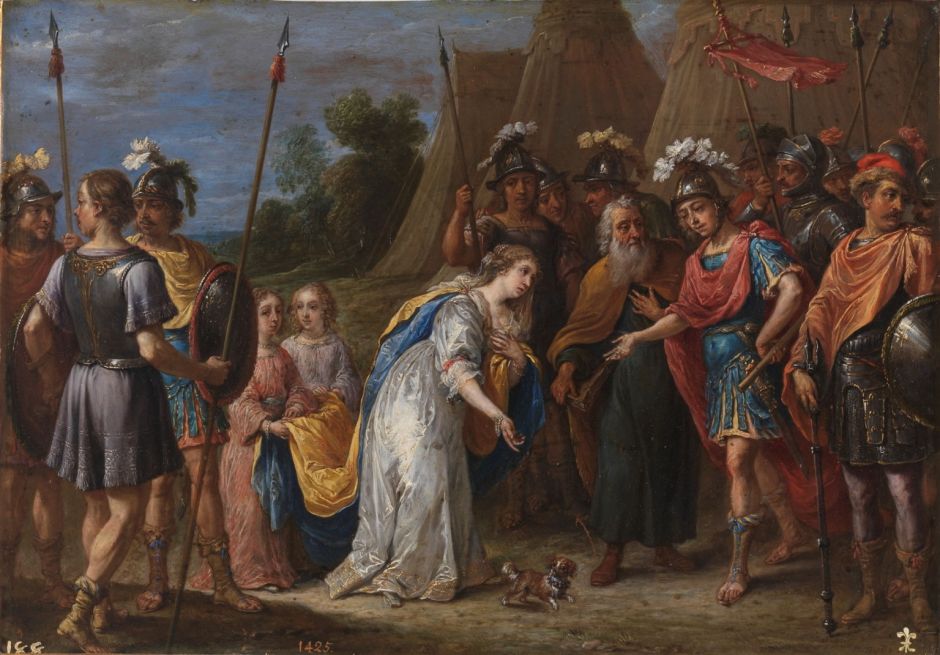Reading visual art: 162 Tents, ancient
Since ancient times there have been some who need to live in temporary shelters. If you don’t have a dense wood to hand, then one of the better options is a tent consisting of animal skins or fabric stretched over a frame. If you want to be truly nomadic, then you can pack up your tent and tow it around wherever you want to go. This pair of articles looks at paintings featuring tents; today’s mainly in depictions of stories and events that took place in the more distant past, and tomorrow’s concentrates on their more modern use.
Armies have long been one of the main users of tents, to accommodate their many soldiers in field conditions. For the Greek forces during the war against Troy, that meant a period of ten years. Having lived in a two-man tent in the Antarctic for a period of nine months over the winter, that’s actually not as arduous as it might sound.

Tiepolo shows some of those tents in his fresco in the Villa Valmarana, Vicenza, from 1757. This, the last of them, shows the scene as Eurybates and Talthybius Take Briseis, Achilles’ Concubine, to Agamemnon, who presumably was also living under canvas throughout. As you’ll see in the paintings below, these tents are conical, and likely to be constructed around a central pole or stave.

Francesco de’ Rossi’s fresco of The Inhabitants of Sutrium Supplicate to Camillus to Free them from Tyranny shows a moment in early Roman history, with Camillus and his troops camped outside the town, when the city of Rome was being sacked by Gauls in around 390 BCE. Again, these tents are conical and of similar appearance.

Albrecht Altdorfer’s breathtaking view of the Battle of Issus (1529), fought between Alexander the Great and Darius III of the Achaemenid Empire, in 333 BC, shows a large tented camp in the distance.

Charles Le Brun’s account of The Queens of Persia at the Feet of Alexander, also called The Tent of Darius, is faithful to Plutarch, in placing this event in Darius’ abandoned tent. This appears a more ornate structure, and lacks a central pole, being most probably set on a wooden frame.

Johann Georg Platzer’s magnificent Rococo The Amazon Queen, Thalestris, in the Camp of Alexander the Great, was painted on copper towards the middle of the eighteenth century. At its centre are the figures of a monarch who could be Thalestris, wearing her crown, waving with her right hand to the arriving Amazons, and showing a fine pair of legs. Next to her is Alexander, who seems to be talking to or about the horse to the right of him (on his left), who could be Bucephalus. Alexander’s tent is great indeed, and pyramidal rather than conical in form, although others look simpler.
The armies that left Europe to fight the Crusades also lived for long periods in tents. Those are shown in paintings of Torquato Tassi’s epic Jerusalem Delivered, a fictional account of the first Crusade of 1096-99.

Here, David Teniers the Younger shows Armida before Godfrey of Bouillon (1628-30), amid the tents of the Christian forces, complete with their guy lines, used to tension and brace the structure.

Ary Scheffer’s painting of The Death of Saint Louis from about 1817 is one of a pair commemorating the death of the French King Saint Louis IX (1214-1270). He was a great reformer who got rid of barbarism from justice, including the banning of trials by ordeal. Louis took part in the seventh and eighth Crusades, and died of dysentery during an epidemic that struck the latter. This shows him in a tent on the Libyan coast in the throes of death, surrounded by his court, with the high spears of warriors in the left background.

William Hogarth’s portrait of David Garrick as Richard III from about 1745 shows William Shakespeare’s character waking in his tent with a start following a dream. In the distance are the long rows of conical tents housing his army.

Marià Fortuny’s vast and uncompleted canvas of The Battle of Tetouan (1862-66) shows Spanish forces attacking an Arab camp, to the left, as they advanced towards the city of Tétouan in Morocco in February 1860.

Vasily Vasilyevich Vereshchagin’s After the Attack. Plevna, 1877-1878 (1881) is a brutally frank depiction of the human devastation at a field hospital, with the wounded, dying and dead littered outside its long framed tents.